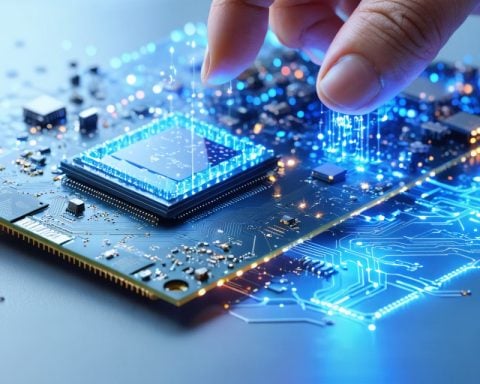Japan is set to significantly advance its AI research and development capabilities through the integration of thousands of NVIDIA H200 Tensor Core GPUs into the AI Bridging Cloud Infrastructure 3.0 (ABCI 3.0). Spearheaded by the National Institute of Advanced Industrial Science and Technology (AIST), this collaboration aims to propel Japan’s generative AI research and development forward.
ABCI 3.0 is the latest iteration of Japan’s large-scale Open AI Computing Infrastructure, designed to enhance AI capabilities and promote technological independence. AIST, along with its business subsidiary AIST Solutions, and Hewlett Packard Enterprise (HPE) as the system integrator, are leading this project. The initiative is backed by Japan’s Ministry of Economy, Trade, and Industry (METI) through the Economic Security Fund, as part of a broader $1 billion investment in computing resources and cloud AI computing.
NVIDIA’s involvement in the project is of great significance. The company not only pledges to support research in generative AI, robotics, and quantum computing but also commits to investing in AI startups while providing comprehensive product support, training, and education.
The ABCI 3.0 supercomputer, located in Kashiwa near Tokyo, will house the integrated NVIDIA H200 GPUs and HPE Cray XD systems with NVIDIA Quantum-2 InfiniBand networking. This setup will deliver unmatched performance and efficiency, offering 6 AI exaflops of computing capacity and 410 double-precision petaflops for general computing capacity. The Quantum-2 InfiniBand platform will provide high-speed and low-latency communication between nodes, essential for managing intensive AI workloads and large datasets.
The NVIDIA H200 GPU is a groundbreaking component, featuring over 140 gigabytes of HBM3e memory at 4.8 terabytes per second. The larger and faster memory significantly accelerates generative AI and large language models, contributing to improved energy efficiency and lower total cost of ownership.
By subsidizing the development of this AI supercomputer, Japan aims to position itself as a leader in the global AI landscape, reducing the time and costs associated with developing next-generation AI technologies. The collaboration between NVIDIA and Japan is a testament to their shared vision of driving AI research and development and transforming vast amounts of data into actionable intelligence.
Additional facts:
– NVIDIA is a leading technology company specializing in GPU (graphics processing unit) and AI (artificial intelligence) technologies.
– Japan has been actively investing in AI research and development to stay competitive globally.
– The AI Bridging Cloud Infrastructure (ABCI) is a national project aimed at advancing AI research and development in Japan.
– The integration of NVIDIA H200 Tensor Core GPUs into ABCI 3.0 will significantly enhance its computing capabilities.
Key questions:
1. What is the purpose of integrating NVIDIA GPUs into ABCI 3.0?
Answer: The integration aims to advance Japan’s generative AI research and development capabilities.
2. What is the significance of NVIDIA’s involvement in the project?
Answer: NVIDIA’s involvement brings comprehensive product support, training, and education, as well as investment in AI startups.
3. How will the integrated GPUs and systems enhance ABCI 3.0?
Answer: The setup will provide unmatched performance and efficiency, offering high computing capacity and low-latency communication essential for intensive AI workloads.
Key challenges or controversies:
1. Cost: The collaboration requires significant investment from Japan’s Ministry of Economy, Trade, and Industry, raising questions about the cost-effectiveness of the project.
2. Technological dependence: While the collaboration aims to enhance Japan’s technological independence, relying on NVIDIA’s GPUs and systems raises concerns about reliance on external technology providers.
Advantages:
1. Advanced computing capabilities: The integration of NVIDIA GPUs and systems will significantly enhance Japan’s AI research and development capabilities.
2. Energy efficiency: The NVIDIA H200 GPUs contribute to improved energy efficiency, reducing the total cost of ownership.
Disadvantages:
1. Cost: The project requires substantial investment, raising questions about the cost-benefit ratio.
2. Technological dependence: Relying on NVIDIA’s technology may limit Japan’s autonomy in developing AI technologies.
Related links:
– Official NVIDIA website
– ABCI official website
https://youtube.com/watch?v=twCpuVyRXTg



















